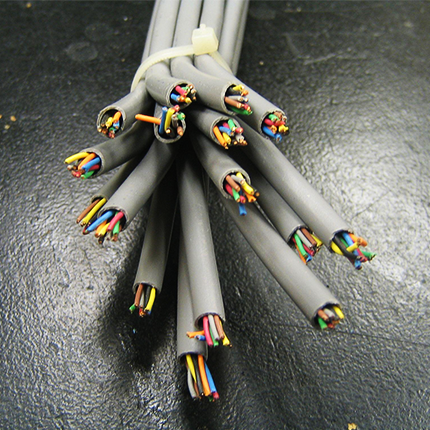Hey, I want to dip my feet into self-hosting, but i find the hardware side of things very daunting. I want to self host a Minecraft server (shocking, i know), and i’ve actually done this before both on my own PC and through server hosts. I’d like to run a Plex server as well (Jellyfin is champ now it sounds like? So maybe that instead), but I imagine the Minecraft server is going to be the much more intensive side of things, so if it can handle that, plex/jellyfin will be no issue.
The issue is, I can’t seem to find good resources on the hardware side of building a server. I’m finding it very difficult to “map out” what I need, I don’t want to skimp out and end up with something much less powerful than what I need, but i also don’t want to spend thousands of dollars on something extremely overkill. I looked through the sidebar, but it seems to mostly cover the software side of things. Are there any good resources on this?
Don’t get server hardware, use regular desktop/laptop machines as they’ll be more than enough for you. Server hardware is way more expensive and won’t be of any advantage. If you’re looking to buy you can even get very good 9-10th gen Intel CPUs and motherboards that are perfect to run servers (very high performance) but that people don’t want because they aren’t good to play the latest games. This hardware is also way more power efficient and sometimes even more powerful than any server hardware that you might get for the same price. Get this hardware for cheap and enjoy.
I’ve got enterprise level hardware, rack moubtable all that jazz.
Between the cost of power, and the heat it generates (which uses more AC and thus power) its not feasible to run it.
I’m looking into clustering some raspberry pis for a more power (and heat) efficient hardware as my next project. Barely scratched the surface of research though.
So hey, if anyone has any tips or links, it would be much appreciated.
Just out today, but probably overpriced: https://www.cnx-software.com/2023/10/20/mixtile-cluster-box-supports-four-rockchip-rk3588-sbcs-connected-over-pcie/
Why not get a few HP / Dell mini computers and cluster them? Small, nice and power efficient (because there are models with “mobile” CPUs).
Cost and a personal bias, also I’ve seen more helpful communities amongst Linux and FOSS advocates than trying to deal with a big brand.
I’ve done a lot of IT stuff in my life, even before working in IT.
I’ve seen too many issues from big brands, and its usually caused by the company.
I have a Pi 2 from way back. I’ve thrown so many distros at that thing over time, and without fail I don’t run into any problems I didn’t personally create while learning or through human error.
I understand all too well that those big brands have support for businesses, warranties, etc. It makes them cost effective long term for business. At a personal level I just don’t see the benefits outweighing the negatives.
Again, personal bias. Same core reason I avoid apple products, bias, though I mainly dislike apples cost combined with their closed off, well, everything.
Yes but ARM is great but compared to server hardware it is shit when it comes to performance and reliability. If you come from server hardware and you really max it out you’re going to have a poor experience.
Also I personally like to avoid the Raspberry Pi and their stuff as much as possible. They’ve done good things for the community however they’ve some predatory tactics and shenanigans that aren’t cool. Here a few examples of what people usually fail to see:
- Requires a special tool to flash. In the past it was all about getting a image and using etcher, dd or wtv to flash it into a card, now they’re pushing people to use Raspberry Pi Imager. Without it you won’t be able to easily disable telemetry and/or login via network out of the box;
- Includes telemetry;
- No alternative open Debian based OS such as Armbian (only the Ubuntu variant);
- Raspberry Pi 5 finally has PCI. But instead of doing what was right they decided to include some proprietary bullshit connector that requires yet another board made by them. For those who are unware other SBC manufacturers simply include a standard PCI slot OR a standard NVME M2 slot. Both great option as hardware for them is common and cheap;
- It is overpriced and behind times.
For what’s worth the NanoPi M4 released in 2018 with a RK3399 already had a PCI interface, 4GB of RAM and whatnot and was cheaper than the Raspberry Pi 3 Model B+ from the same year that had Ethernet shared with the USB bus.
If you don’t want those big brands (I only suggested them because they’re cheap second hand) build something yourself on consumer hardware or pick a Chinese brand.
Those big brands are cheap though, for 100€ you can get an HP Mini with an i5 8th gen + 16GB of ram + 256GB NVME that obviously has a case, a LOT of I/O, PCI (m2) comes with a power adapter and more importantly it outperforms a RPi5 in all possible ways. Note that the RPi5 8GB of ram will cost you 80€ + case + power adapter + bullshit pci adapter + sd card + whatever else money grab.
Side not on alternative brands, HP mini units are reliable the BIOS is good and things work. Now the trendy MINISFORUM is cool however their BIOS come out of the factory with wired bugs and the hardware isn’t as reliable - missing ESD protection on USB in some models and whatnot.
Performance isn’t key. But I like performance, lol. I also wasn’t aware of their more recent practices. So thank you.
I’ll have to check out the HP mini. As I said, just barely scratched the surface on researching this, and its more of a thought than a project at the moment, lol.
I just can’t afford (and cool) enterprise level stuff at home. It was free (to me) so no big loss other than buying a better CPU used ~50 bucks. I’ve spent more on worse ideas lol.
I was just trying to share a bit of my experience, I too have datacenter / server hardware experience and have dealt with a ton of mini computers and those ARMs and Chinese brands aren’t what one usually expects at the most fundamental details.
As someone who is also looking at building a server for different things then you( mainly nextcloud and a few other self hosted services). if you don’t need more then 2tb of storage look into a used HP mini office PC.
-
They are cheap at less then £200 for an older model or even sub £100
-
They are a lot more powerful then an SBC like a raspberry pi but without being an electricity consumption monster like a lot of servers
-
Some have a 60W PSU so they are dirt cheap to run
-
Newer ones have a 2.5 SATA slot and a M.2 slot( including the 60W model I’m looking at getting used). So you can have dual drives for a fast main drive and a backup drive or RAID depending on how you set it up
-
They are small and don’t take up much room in your house like a raspberry pi
-
If you need more space and it doesn’t have to be super fast you could get a USB NAS for it
So overall they are a really good option if you want something small and you don’t have a ton of money for hardware or electricity but a raspberry pi doesn’t fulfil your performance needs.
-
Lots of choices for sure. I haven’t built a PC in years but I’d start with looking at the requirements for the Minecraft & Jellyfin server, maybe shoot a bit higher to future-proof the build, then browse PC part picker builds to find combos that have worked well for others?
Best of luck to you.
Hardware wise, you just need a good PC. One thing to note is that graphics are almost irrelevant for servers. In your case, it would help to have AV1 encoding, so you could go with a $110 Intel A380 or A310.
The most important thing is RAM. The more server applications you start putting on there, the more RAM you’ll need. 16GB is fine for what you need right now, but make sure your mobo has two extra slots so you can up it to 32 if needed.
Storage, it’s really up to you. If you want everything on an NVMe, great! If you want everything in a RAID array, expensive, but great! Using mdadm for RAID arrays is fairly easy, just a lot of reading. Make sure you have enough SATA ports to support all the disks you need if you want that.
CPU, avoid ones with integrated graphics to save cost. Unless you’re buying one that does AV1 encoding, then you don’t need the A380.
deleted by creator
just get a synology?
I used to host Plex on a Synology. It’s okay, but it struggles when skipping around. And downloads for offline viewing would fail almost always. I have had a much better experience since switching to my old gaming PC with a GPU.
Way too expensive, and not what they need.
Great as a NAS but pretty low specced for hosting many more demanding applications for the cost.
I run Plex on mine but was faster on a raspberry pi 3 lol.
For file management, backups, etc. It’s stellar.
To run Minecraft and Plex? That’s not really the ideal use case for a Synology…
IF you’re going to run your self-hosted server to run a minecraft server, get a webclient front-end. Even though it’s not FOSS and therefore a no-no with most lemmy users, AMP from Cube Coders is a great option, it starts a flat $10 fee for a permanent license. It has some fantastic features for remote backup among supporting other games.
However, if you’re a bit concerned about that there is Pterodactyl, which I’ve heard good things about, but I went with AMP because it supports other game servers like GMOD.
This is a repost from my suggestion some weeks ago:
I went for the ASRock J5040 board, 16gb ram a 500gb m.2 as system using a PCI adapter , 2x4tb ironwolf as ZFS mirror pool, 350 W power supply all in the node 304 fractal case for 550 euro alltogether.
Runs proxmox as hypervisor for VM or Container. 6 LXC running motioneye, plex, pyload with openvpn, syncthing, rclone cloud backup and openbookshelf.
Typical power usage is around 20W
That said it could also run on PicoPSU
I used to run a Minecraft server with PaperMC on an RPi4, and I would only give the java environment 2G of RAM. It never crashed except when I overloaded it with plugins. The same Pi was also hosting Pihole and Ubiquiti UNMS. As long as you aren’t planning on hosting hundreds of players at the same time, you should be fine with whatever (and assuming you’re doing this at home on residential internet, your network would be the bottleneck anyway). I do recommend PaperMC, it improves the performance and stability of Minecraft and it’s a fork of Spigot so it’s compatible with most plugins.
Also /u/ShellMonkey is correct about used server hardware. You can pick up a Dell PowerEdge for about $200.
Decent older servers (e.g., Dell Poweredge) can be had off of Craigslist/FB Marketplace pretty cheaply (~$300-$400).
They’re cheap but they’re loud, hot and use a lot of energy. So if those are an important consideration you might be better off with modern hardware
OP should skip this option entirely for their use case. Regular old consumer hardware is more than adequate.
deleted by creator
That is a complete overkill. You don’t need a cluster of Proxmox nodes for personal hosting. And you certainly don’t need a 24-port switch.
deleted by creator
removed by mod
Same for me
I use old thinkcentre machines, they’re cheap and are powerful enough for decent servers. I have them loaded with 16gb of RAM and 2x265gb NVME each for mirroring. They work wonderfully.
And some even come with discrete gpu
Media servers can be pretty demanding particularly when doing on the fly transcoding. Look for refurbished servers, big companies routinely toss perfectly good hardware as part of product lifecycle management. A favorite of mine is called ‘techmikeny’ although their site and search is pretty janky.
I/O performance needs to be considered along with the number of processing threads which really comes into play if you have a lot of virtual machines/containers running. Less than $1000 upfront and you can get well more than you think you need, and have space to improve. I’d say focus on CPU first, it’s easy to add memory and storage later if you buy a big enough box to have extra slots open, but adding CPUs is more of a pain.
Electricity and noise should be a thought too. My largest box is using about 240 watts right now and if you go with actual rack servers they tend to be loud with a half dozen fans running at 6000 rpm or so. If you can stash it somewhere out of your living space all the better.
deleted by creator
The power is only needed for transcoding. Multiple 4k streams should be little more than directly serving up the files to the client machine (like your TV) which consumes very few resources. You should avoid transcoding 4k down to 1080p or 720p by either avoiding 4k content, grabbing only stuff that is directly compatible, or having duplicate copies of stuff in 4k and 1080p so that the 1080p file gets transcoded if needed.
Many of us have separate 4k libraries on our servers to prevent any possibility of transcoding it (like for remote streams when you don’t have the upload speed to stream 4k directly). Like for example i have about a dozen family members using my server remotely but I don’t share my 4k libraries with them since the best upload I can get with Comcast is 12Mbps. In the Plex settings I have everyone limited to 3-4Mbps so that I can handle 3-4 people watching remotely at once which leads to these streams getting transcoded down to 720p.
deleted by creator
That was just an example of when you might need to transcode multiple streams at once. Typically you shouldn’t need to transcode anything especially if you’re just watching at home. In that case you can have dozens of streams in any resolution running at once without the computer sweating at all.
In a transient way I might say rather than constantly. I use Emby and when something is streaming to a Roku in a format that’s not native it ends up using something around 80% of the allocated power. I don’t use the throttling option though so it’s actually working well ahead of the stream and finishes up a full movie in a few minutes rather than going along in realtime.
So yeah it could be heavily mitigated but I’d rather just have it done rather than hoping it’s smart enough plan ahead.
Yes exactly. QuickSync has been on Intel CPUs (i5 and up) since Sandy Bridge. But I’ve heard that only since 4th gen has it been out.
I would recommend a used SFF PC for docker, and a separate NAS like a Qnap for file storage.
Honestly for what you’re trying to accomplish, any PC built in the past 10 years would suffice.
I’d say the bigger issue would be what server operating system you’d want to run. Personally I use UnRaid and I love it, all of the apps you mention and more are available as premade docker templates in the Community Apps plugin. I’ve tried Windows and FreeNas before but I find UnRaid just so user friendly and reliable.
Modded minecraft servers are heavily dependent on single threaded performance. For more vanilla servers paper helps a lot. For forge I highly recommend trying mohist. It isn’t compatible with all forge mods but it works well enough that you can just replace the server jar in many modpacks and see a large performance boost.
The biggest thing that slows down mc servers in my experience is world gen. Pre generating the world and adding a world border can help a lot.
I’ve not done a larger scale fabric server so I can’t offer much advice in optimizing it but the client speed ups available through fabric look very impressive.
If you are running a server without world borders or with a lot of simultaneous players I’d look in depth on what ssd you’re saving the world to. You want dram cache, random write speeds are way more important than sequential. If you can find an Intel optane for cheap they are pretty amazing. The ssd is less important than your cpu and having enough ram to run the server.
Generally an older gaming pc is better than an older server. Again you are targeting single threaded performance. If you are purchasing hardware it might make more sense to go with lower end new hardware than higher end old hardware. It’s all about trade offs for your use case and budget. For a long time I just used my main pc to play games and host servers (ram is cheaper than another pc) but I tinker too much to keep good ‘server’ uptime.
Transcoding can get pretty taxing on a system but any semi modern quad core can handle a few 1080p streams or a 4k stream. Plus you can use a gpu for transcoding. The nice thing is it scales with core count pretty well so older server or workstation hardware works well.
Fabric has some amazing open source projects dedicated to performance.
Idk if any multithread it yet but its my current go to for low end systems
The only thing I’d add to this is that the people who make Paper Minecraft are working on Folia, a multi threaded server. It’s probably worth looking into if you’re starting from scratch :)












